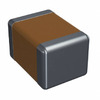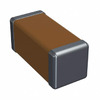ATMEGA162 Microcontroller Basics: Understanding Pinout, and Equivalent Devices
2024-10-29
801
The ATmega162 microcontroller epitomizes the balance of performance and power efficiency with its advanced AVR RISC architecture, executing up to 1 MIPS per MHz.
Catalog

ATMEGA162 Pinout

ATMEGA162 CAD Model

Overview of ATmega162 Microcontroller
The ATmega162 microcontroller excels with its advanced RISC architecture, achieving near 1 MIPS per MHz efficiency for superior existing processing. This efficiency is basic for optimizing power usage and minimizing delays in embedded systems. It offers versatile I/O pins that enhance its integration with various peripherals, required for accurate and reliable control systems. With robust interrupt capabilities and a comprehensive timer system, the ATmega162 efficiently manages tasks, making it basic for complex automation. Its technical specifications, including a 16-bit Timer/Counter with PWM and adaptable operational voltage and temperature ranges, are basic for developing precise and durable applications across diverse environments.
Features of ATmega162 Microcontroller
|
Feature Category |
Feature
Details |
|
Microcontroller
Core |
High-performance,
Low-power AVR® 8-bit Microcontroller |
|
Architecture |
Advanced RISC
Architecture |
|
- 131
Powerful Instructions – Most Single-clock Cycle Execution |
|
|
- 32 x 8
General Purpose Working Registers |
|
|
- Fully
Static Operation |
|
|
- Up to 16
MIPS Throughput at 16 MHz |
|
|
- On-chip
2-cycle Multiplier |
|
|
Memory |
- 16K Bytes
of In-System Self-programmable Flash program memory |
|
- 512 Bytes
EEPROM |
|
|
- 1K Bytes
Internal SRAM |
|
|
- Write/Erase
cycles: 10,000 Flash/100,000 EEPROM |
|
|
- Data
retention: 20 years at 85°C/100 years at 25°C |
|
|
- Optional
Boot Code Section with Independent Lock Bits |
|
|
- Up to 64K
Bytes Optional External Memory Space |
|
|
- Programming
Lock for Software Security |
|
|
Debugging and
Programming Interface |
- JTAG (IEEE
std. 1149.1 Compliant) Interface |
|
-
Boundary-scan Capabilities According to the JTAG Standard |
|
|
- Extensive
On-chip Debug Support |
|
|
- Programming
of Flash, EEPROM, Fuses, and Lock Bits through JTAG |
|
|
Peripheral
Features |
- Two 8-bit
Timer/Counters with Separate Prescalers and Compare Modes |
|
- Real Time
Counter with Separate Oscillator |
|
|
- Six PWM
Channels |
|
|
- Dual
Programmable Serial USARTs |
|
|
-
Master/Slave SPI Serial Interface |
|
|
-
Programmable Watchdog Timer with Separate On-chip Oscillator |
|
|
- On-chip
Analog Comparator |
|
|
Special
Features |
- Power-on
Reset and Programmable Brown-out Detection |
|
- Internal
Calibrated RC Oscillator |
|
|
- External
and Internal Interrupt Sources |
|
|
- Five Sleep
Modes: Idle, Power-save, Power-down, Standby, and Extended Standby |
|
|
I/O and
Packaging |
- 35
Programmable I/O Lines |
|
- 40-pin
PDIP, 44-lead TQFP, and 44-pad MLF |
|
|
Operating
Voltages |
2.7 - 5.5V |
|
Speed Grades |
0 - 16 MHz |
Technical Specifications
Microchip Technology ATMEGA162-16PU technical specifications, attributes, parameters and parts:
|
Type |
Parameter |
|
Factory Lead
Time |
7 Weeks |
|
Mount |
Through Hole |
|
Mounting Type |
Through Hole |
|
Package /
Case |
40-DIP
(0.600, 15.24mm) |
|
Number of
Pins |
40 |
|
Number of
I/Os |
35 |
|
Watchdog
Timers |
Yes |
|
Operating
Temperature |
-40°C~85°C TA |
|
Packaging |
Tube |
|
Series |
AVR® ATmega |
|
Published |
1997 |
|
JESD-609 Code |
e3 |
|
Pbfree Code |
Yes |
|
Part Status |
Active |
|
Moisture
Sensitivity Level (MSL) |
1 (Unlimited) |
|
Number of
Terminations |
40 |
|
Terminal
Finish |
MATTE TIN |
|
Additional
Feature |
ALSO OPERATES
AT 2.7V MINIMUM SUPPLY |
|
Terminal
Position |
DUAL |
|
Supply
Voltage |
5V |
|
Frequency |
16MHz |
|
Base Part
Number |
ATMEGA162 |
|
Supply
Voltage-Max (Vsup) |
5.5V |
|
Power
Supplies |
3/5V |
|
Interface |
EBI/EMI, SPI,
UART, USART |
|
Memory Size |
16kB |
|
Oscillator
Type |
Internal |
|
RAM Size |
1K x 8 |
|
Voltage -
Supply (Vcc/Vdd) |
2.7V~5.5V |
|
uPs/uCs/Peripheral
ICs Type |
MICROCONTROLLER,
RISC |
|
Number of
Bits |
8 |
|
Core
Processor |
AVR |
|
Peripherals |
Brown-out
Detect/Reset, POR, PWM, WDT |
|
Program
Memory Type |
FLASH |
|
Core Size |
8-Bit |
|
Program
Memory Size |
16KB 8K x 16 |
|
Connectivity |
EBI/EMI, SPI,
UART/USART |
|
Bit Size |
8 |
|
Access Time |
16 μs |
|
Has ADC |
NO |
|
DMA Channels |
NO |
|
Data Bus
Width |
8b |
|
DAC Channels |
NO |
|
Number of
Timers/Counters |
4 |
|
Address Bus
Width |
8b |
|
Density |
128 kb |
|
EEPROM Size |
512 x 8 |
|
Number of PWM
Channels |
6 |
|
Number of SPI
Channels |
1 |
|
Height |
4.445mm |
|
Length |
52.58mm |
|
Width |
13.97mm |
|
REACH SVHC |
No SVHC |
|
Radiation
Hardening |
No |
|
RoHS Status |
ROHS3
Compliant |
|
Lead Free |
Lead Free |
ATMEGA162 Functional Block Diagram

ATMEGA162 Counterparts
|
Model Number |
Manufacturer |
Description |
|
ATMEGA162-16AI |
Atmel
Corporation |
RISC Microcontroller,
8-Bit, FLASH, AVR RISC CPU, 16MHz, CMOS, PQFP44, 10 X 10 MM, 1 MM HEIGHT,
0.80 MM PITCH, PLASTIC, MS-026ACB, TQFP-44 |
|
ATMEGA162-16MC |
Atmel
Corporation |
RISC
Microcontroller, 8-Bit, FLASH, AVR RISC CPU, 16MHz, CMOS, PQCC44, 7 X 7 MM, 1
MM HEIGHT, 0.50 MM PITCH, MLF-44 |
|
ATMEGA162-16PI |
Atmel
Corporation |
RISC
Microcontroller, 8-Bit, FLASH, AVR RISC CPU, 16MHz, CMOS, PDIP40, 0.600 INCH,
PLASTIC, MS-011AC, DIP-40 |
|
ATMEGA162-16AC |
Atmel
Corporation |
RISC
Microcontroller, 8-Bit, FLASH, AVR RISC CPU, 16MHz, CMOS, PQFP44, 10 X 10 MM,
0.80 MM PITCH, PLASTIC, TQFP-44 |
|
ATMEGA162-16PU |
Atmel
Corporation |
RISC
Microcontroller, 8-Bit, FLASH, AVR RISC CPU, 16MHz, CMOS, PDIP40, 0.600 INCH,
GREEN, PLASTIC, MS-011AC, DIP-40 |
|
ATMEGA162-16PC |
Microchip
Technology Inc |
RISC
Microcontroller, 8-Bit, FLASH, 16MHz, CMOS, PDIP40 |
|
ATMEGA162-16MI |
Atmel
Corporation |
RISC
Microcontroller, 8-Bit, FLASH, AVR RISC CPU, 16MHz, CMOS, 7 X 7 MM, 1 MM
HEIGHT, 0.50 MM PITCH, MO-220VKKD-3, MLF-44 |
Parts with Similar Specs
|
Specification |
ATMEGA162-16PU |
ATMEGA164P-20PU |
ATMEGA32A-PU |
ATMEGA16A-PU |
|
Package /
Case |
40-DIP
(0.600, 15.24mm) |
40-DIP
(0.600, 15.24mm) |
40-DIP
(0.600, 15.24mm) |
40-DIP
(0.600, 15.24mm) |
|
Number of
Pins |
40 |
40 |
40 |
40 |
|
Data Bus
Width |
8 b |
8 b |
8 b |
8 b |
|
Number of I/O |
35 |
32 |
32 |
32 |
|
Interface |
EBI/EMI, SPI,
UART, USART |
2-Wire, I2C,
SPI, UART, USART |
2-Wire, I2C,
SPI, UART, USART |
2-Wire, I2C,
SPI, UART, USART |
|
Memory Size |
16 kB |
16 kB |
16 kB |
32 kB |
|
Supply
Voltage |
5 V |
5 V |
- |
5 V |
|
Peripherals |
Brown-out Detect/Reset,
POR, PWM, WDT |
Brown-out
Detect/Reset, POR, PWM, WDT |
Brown-out
Detect/Reset, POR, PWM, WDT |
Brown-out
Detect/Reset, POR, PWM, WDT |
ATMEGA162 Package

ATMEGA162 Manufacturer Analysis
Based in Chandler, Arizona, Microchip Technology Inc. is a leader in microcontrollers and analog semiconductors, providing robust and versatile solutions across various industrial sectors. Their products range from consumer electronics to automotive systems, allowing companies to streamline supply chains with a single reliable supplier, fostering alteration and efficiency. Microchip's commitment to cutting-edge technology helps clients reduce costs and enhance operational efficiency, with advanced microcontrollers central to resource management. The company offers complete technical support, including detailed product education, which empowers customers to maximize their technology use and facilitates seamless transitions.
Datasheet PDF
ATMEGA164P-20PU Datasheets:
ATMEGA32A-PU Datasheets:
ATMEGA16A-PU Datasheets:
 ABOUT US
Customer satisfaction every time. Mutual trust and common interests.
ABOUT US
Customer satisfaction every time. Mutual trust and common interests.
function test. The highest cost-effective products and the best service is our eternal commitment.
Hot Article
- Are CR2032 and CR2016 Interchangeable
- MOSFET: Definition, Working Principle and Selection
- Relay Installation and Testing, Interpretation of Relay Wiring Diagrams
- CR2016 vs. CR2032 What’s the difference
- NPN vs. PNP: What's the Difference?
- esp32 vs stm32: which microcontroller is better for you?
- LM358 Dual Operational Amplifier Comprehensive Guide: Pinouts, Circuit Diagrams, Equivalents, Useful Examples
- CR2032 VS DL2032 VS CR2025 Comparison Guide
- Understanding the Differences ESP32 and ESP32-S3 Technical and Performance Analysis
- Detailed Analysis of RC Series Circuit
 The AD9833 Waveform Generator: A Review of Its Features and Technical Specifications
The AD9833 Waveform Generator: A Review of Its Features and Technical Specifications
2024-10-29
 The 74HC193 Counter: Specifications, Pinout Diagram, and Datasheet
The 74HC193 Counter: Specifications, Pinout Diagram, and Datasheet
2024-10-29
Frequently Asked Questions [FAQ]
1. What is the essential property of the ATmega162?
The ATmega162 is a low-power CMOS 8-bit microcontroller based on the AVR enhanced RISC architecture.
2. What are the system development tools supported by ATmega162 AVR?
The ATmega162 AVR is supported with a full suite of program and system development tools including: C compilers, macro assemblers, program debugger/simulators, In-Circuit Emulators, and evaluation kits.
3. What is the premise that ATmega162 allows system designers to optimize power consumption and processing speed?
By executing powerful instructions in a single clock cycle, the ATmega162 achieves throughputs approaching 1 MIPS per MHz allowing the system designer to optimize power consumption versus processing speed.
Hot Part Number
 GCM155R71E472KA37D
GCM155R71E472KA37D GCM1885C2A4R0CA16D
GCM1885C2A4R0CA16D CC1206JRNPO9BN332
CC1206JRNPO9BN332 LMK105SD392KV-F
LMK105SD392KV-F GQM1555C2DR75WB01D
GQM1555C2DR75WB01D 18122C223KAT2A
18122C223KAT2A 1808AC103MATBE
1808AC103MATBE ERB1885C2E4R7BDX1D
ERB1885C2E4R7BDX1D GRM0335C1H6R0DD01J
GRM0335C1H6R0DD01J GRM1557U1H5R5DZ01D
GRM1557U1H5R5DZ01D
- PIC18LF6680-I/PT
- ATSAMD21E17A-AU
- 24LC64-I/P
- CY37032VP44-100AC
- XR17V254IV-F
- SC1112STRT
- RT0805BRD0743RL
- 6MBP160RA060-55
- TLV2772CDGK
- NCV4269DWR2G
- AD9248BSTZ-65
- LT3688IUF#TRPBF
- TPS3700DDCR2
- T491B475M020ZT4860
- TPS60403QDBVRQ1
- TPS61085DGKT
- VSC8504XKS-05
- 9LPRS502PGLFT
- AT1616S11HMD33I-DB
- MB88347PFV-G-BND-E
- NCS20094DR2G
- PI74FCT3244Q
- PMB6618RV1.3
- PPC405GP-BE266C
- RT1201B7
- S71VS064RBOAHT0L0
- STA518MYS
- TMP47C222UG-6JV6
- TPA0102PWPLE
- HI9P201HS-9
- PC28F256P33T85
- SP4405EU/TR
- MAX31826MUA
- CL321611T100M
- MN864704AKC
- RFX240-W35BSOB
- SN9C325AFG
- IDT71256L45DB
- DS18B20-PAR